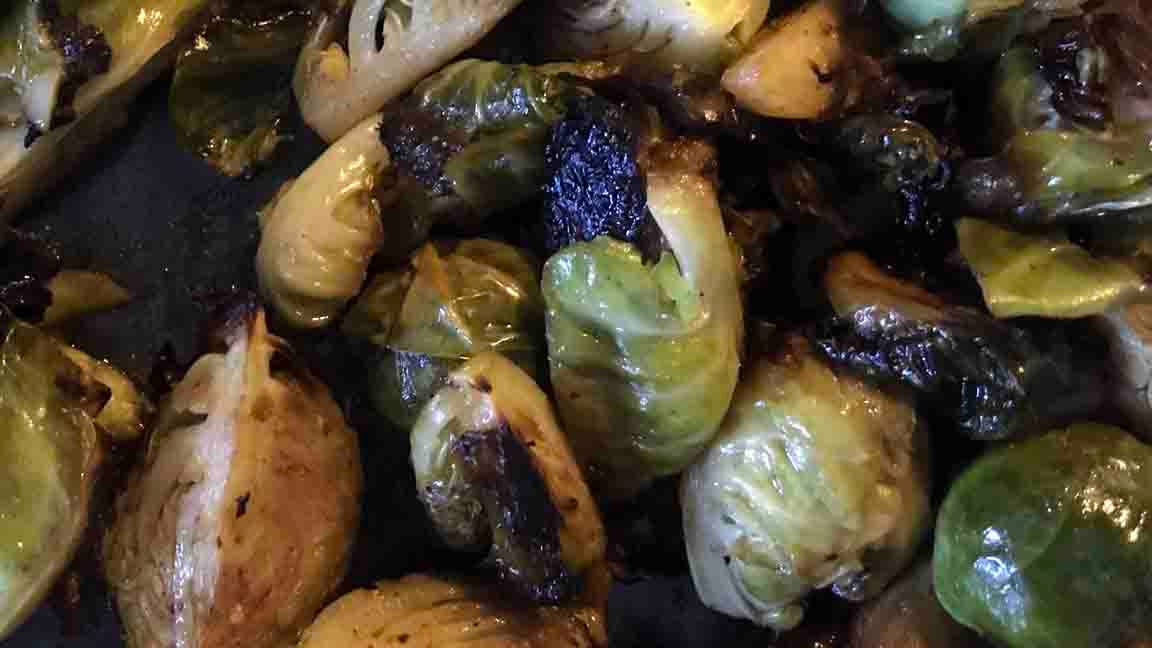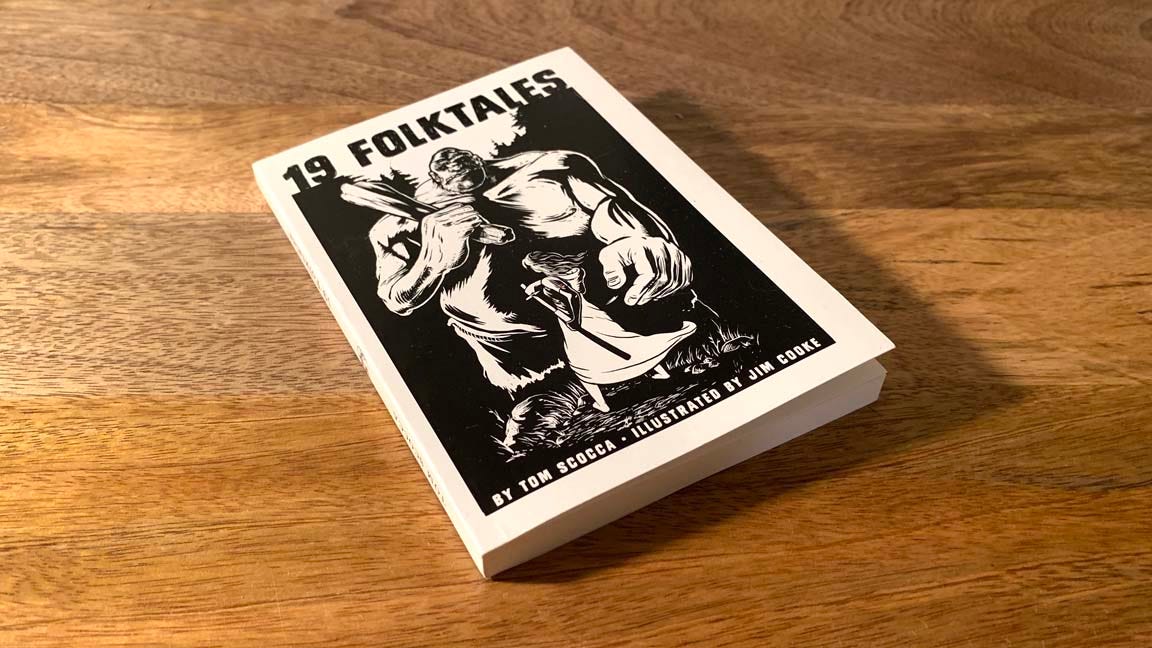EDIBLE CULTURE DEP'T.
When Did America Learn to Eat?
I COOK WITH extra-virgin olive oil all the time, which makes it seem to me as if I've been doing it all my life. For some reason, though, the other day, I found myself remembering that in fact I hadn't. My family didn't used to have extra-virgin olive oil at all. Nobody did. We ate homemade Italian food cooked with regular golden Filippo Berio from the big gold-and-yellow rectangular can, which was the good olive oil and a marker of progress. My father's grandmother, who taught him to cook, used whatever vegetable oil she could get.
Sometime in the 1980s, in my teens, I remember reading an article—in Smithsonian magazine, I'm pretty sure—about Italy's special extra-virgin oil, direct from the ripened olives. In the photos it flowed in fresh streams, luminous green. Before too long, Filippo Berio had a big gold-and-green rectangular can on the shelf of the Acme Market, alongside the gold-and-yellow one. I poured the green oil into a teaspoon and tasted it, familiarizing myself with the sharp flavor at the back of my mouth. I drizzled some of it onto a Lender's bagel I'd toasted from the freezer. Soon enough, extra-virgin olive oil was normal.
Yesterday, on the Bluesky posting platform, Osita Nwanevu linked to a Slate story from 2014 about the relatively recent American embrace of oven-roasted vegetables, and thence to a New York Times article from 1993, alerting readers to the news that "large cuts of meat and whole poultry" no longer had a monopoly on the oven, as "increasingly, chefs are roasting other foods like fish, vegetables and fruit."
"Enough really cannot be said about how much food has improved in the last 30 years," Nwanevu wrote.
This is especially, disorientingly true if you reached adulthood about 30 years ago. I was born in 1971, into the era of boiled vegetables and Maxwell House coffee. My parents were very good cooks, but the Brussels sprouts that reached the table were soggy and skunky. Now, my kids love Brussels sprouts, browned around the edges in a hot pan with salted lemon and drizzled with extra-virgin olive oil. It's not just that the cooking technique has changed; the vegetables themselves have been bred to taste better. The whole situation has changed.
Everyone grows up and learns more about the world, and there's a natural illusion that the world itself must be getting more complicated and interesting in the process. You learn to overcome that, and to acknowledge the sophistication that was already out there before you, personally, had the chance to discover arthouse movies or conceptual art or whatever; eventually you may even train yourself to the opposite habit of assuming, once you learn about something, that you ought to have known about it all along.
But with food, if you grew up in the United States in the late 20th century, the original illusion is true. When you learned about some new food or drink, or a new way of cooking, pretty much everybody else was learning about it, too. Nobody knew about anything! Certainly not at scale. If you time-traveled back to 1980 with your mature, 21st century palate, you'd be hard pressed to do anything with it. You couldn't rustle up banh mi or jianbing or an arugula salad in a random big city. They made a whole movie about how you couldn't even get Coors beer east of Texas!
Meanwhile, the Immigration Act of 1965 was bringing people from formerly excluded parts of the world into the United States, where they eventually had enough numbers to open restaurants and supermarkets. But even that took a good while. There was no canned fried dace or black rice vinegar alongside the water chestnuts and soy sauce in the foreign-food section of my childhood grocery stores, and the little Asian market didn't have frozen durian hidden somewhere in the back behind the lacquered Japanese chopsticks and Botan candy.
Yet it's nearly impossible to make myself understand it wasn't there. It feels as if it must have been, the same way that when I slide a pan of Jerusalem artichokes into the oven, it feels as if I could and would have naturally done the same thing 30 years ago. How could something so basic be something new?
Nevertheless, it is. Michelangelo was born in an Italy that had never seen a tomato or a pepper; masala chai was a 19th century invention to help establish an Indian market for Britain's tea companies. In October of 2007, the New York Times was marveling at the concept of a kale salad, complete with the discovery that lacinato kale is not the same as curly kale ("I had thought the various kales were pretty interchangeable"). For comparison, Steve Jobs had introduced the iPhone that January.
WEATHER REVIEWS
New York City, September 21, 2023
★★★★★ There was no need to think about any kind of climate control. It was just a matter of letting one more ideal day flow cool and flawless through the windows. The airplanes were following some extra-loud flight path. Out on the balcony the fallen blossoms were still colorful; the dogwood fruits were redder than ever. A translucent sheet of cloud stretched away from an undulating edge that must have started as a contrail. A pigeon perched on the metal cap of a balcony drainpipe, with one foot slipping over the edge and its tail feathers bent against the wall of the building, blinking its red eye from its cocked head. It seemed to have no idea how it had gotten onto there, or how to get off.
EASY LISTENING DEP’T.
SANDWICH RECIPES DEP’T.
WE PRESENT INSTRUCTIONS for the assembly of select sandwiches from Recipes: Dainties, Salads and Clever Hints, author unknown, published by the Lorain Printing Co. in 1919. This book is in the Public Domain and available at archive.org for the delectation of all.
CUCUMBER SANDWICHES— Drain and dry thinly sliced cucumbers, which have stood in salted ice water 1 hour, be sure they are dry. Marinate in olive oil 10 minutes, sprinkle thin slices of bread with salt and cayenne pepper, spread with cucumber, wet with the oil, cover with bread.
CRESS SANDWICHES— One cup chopped cress, 1 teaspoon chopped chives, 10 chopped olives mixed with mayonnaise, spread on brown bread.
NUT SANDWICH FILLING— Blanch 1 cup almonds, 1 cup peanuts, 1 cup filbert, add 1 cup pecans. Grind three times through fine meat cutter, the last time adding 1/2 cup water and beating thoroughly adding a little salt. Pot and keep cool; the day you make the sandwiches beat in 1 quart of heavy cream and add 1 pound of sugar.
This will fill 100 Sandwiches.
If you decide to prepare and attempt to enjoy a sandwich inspired by this offering, kindly send a picture to us at indignity@indignity.net.
MARKETING DEP'T.
19 FOLKTALES collects a series of timeless tales of canny animals, foolish people, monsters, magic, ambition, adventure, glory, failure, inexorable death, and ripe fruits and vegetables. Written by Tom Scocca and richly illustrated by Jim Cooke, these fables stand at the crossroads of wisdom and absurdity.
HMM WEEKLY MINI-ZINE, Subject: GAME SHOW, Joe MacLeod’s account of his Total Experience of a Journey Into Television, expanded from the original published account found here at Hmm Daily. The special MINI ZINE features other viewpoints related to an appearance on, at, and inside the teevee game show Who Wants to Be A Millionaire. Your $20 plus shipping and tax helps fund The Brick House collective, a Publishing Concern featuring a globally diverse set of publishers doing their own thing, with interesting items and publications available for purchase at SHOPULA.
Thanks for reading INDIGNITY, a general-interest publication for a discerning and self-selected audience. We depend on your support!









